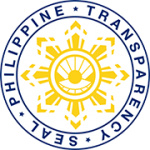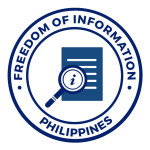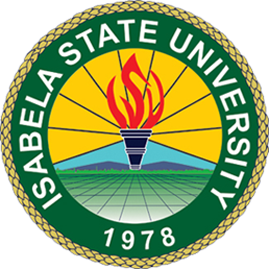FEATURE | ISU and partner agencies for water research continue academic efforts to invigorate scientific solutions responsive to our current water problems. Merging initiatives from IFWARM Project and the SWIM R&D Center of ISU, a new training workshop is set to beef- up the computing and technological competency of the participating researchers.
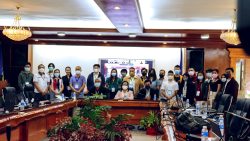
The Isabela State University had teamed up with Cagayan State University, Kyoto University, and Vietnamese German University to orchestrate a joint face-to-face and virtual four-day international training workshop on “Flow and Sediment Transport Modeling in River Basins using TELEMAC 2D and 3D Numerical Codes” on February 25-28, 2022 at Cagayan State University, Carig Sur, Tuguegarao City. It truly gained an enormous support from the different partner-stakeholders as it was attended by numerous representatives of academes and partner agencies from the country and ASEAN region.
Primarily, this capacity-building activity was schemed deliberately starting from a field tour at DPWH Flood Infrastructures Project at Cagayan River Basin as a preparatory activity to actually show and subsequently appreciate the circumstances where the possible learning on flood and sediment management would be applied. Undeniably, the field itinerary which covered four project sites (Enrile, Buntun, Cataggaman, and Namabbalan) was an eye-opener which magnified the significance of acquiring an adequate level of cognizance on hydraulic modelling of flow and sediment transport in rivers. This preliminary activity was followed by TELEMAC installation process to immediately ignite the interest of the on-site and online participants on this innovative and cutting-edge technology with the unrelenting assistance of numerous international partners. To further reinforce the extent of solidarity among the participants as they join in this technical journey, a fellowship night had been organized by Engr. Policarpio L. Mabborang Jr. of Cagayan State University to create a genuine bond and establish a stronger connection with one another as they embark together on this much-awaited culminating activity of the project IFWaRM for its first year of implementation.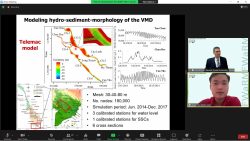
On the first day of the training, the attendees had witnessed the explicit appreciation of the speakers for this kind of technology transfer activity. In fact, the proactive leaders of state universities in the region, Dr. Ricmar P. Aquino, ISU President, and Dr. Urdujah G. Alvarado, CSU President, had expressed their commitment to be part of the collaborative solution towards the establishment of water resources management and to uphold a workable disaster planning management to protect our resources. Afterwards, the international partners from Kyoto University concisely explained the impacts of climate change and the integrated flood and sediment management at a river basin scale for sustainable development. To conclude the opening program, DOST-USec Sancho Mabborang had encouraged everyone to be a catalyst of environmental change towards a better and safer community. It was sealed with signing of Memorandum of Understanding among ISU, CSU, and PICE to signify imminent collaborative efforts and engagements.
Proceeding to the next phases of the training workshop, Prof. Sameh Kantoush of Kyoto University had patiently and comprehensively discussed the General Introduction of Hydrodynamic in which he presented what TELEMAC is as a processor and its governing equations, mathematical properties, and numerical aspects. He also elucidated hydrodynamics TELEMAC-2D, samples of risk assessment, hydrodynamics TELEMAC-3D, coupled TELEMAC-2D
/3D and Sisyphe, and website and documentation for the modeling system. Moreover, he also explained the topic on Sediment Transport and Morphodynamic Modelling: GAIA’s Structure, and Coupling Hydrodynamics and Morphodynamics. Specifically, he explained the steering TELEMAC-2D with its parameters and data files, some physical phenomena considered in the utilization of this modelling system, and general recommendations before using a numerical model.
The presentation of Prof. Kantoush was further reinforced by Dr. Doan Van Binh of Vietnamese German University as he shared his experience and studies on TELEMAC 2D Coupled with Sisyphe for Mekon Delta Morphological Changes (Vietnam). He accentuated his discussion on the governing equations of the TELEMAC-2D and Sisyphe models, hydro-sediment-morphology of the VMD, model calibration and validation, sediment dynamics and distribution, riverbed evolution, forecasting riverbed incision, and scour hole formation. He then stressed in his conclusion the establishment of a coupled model that can simulate sedimentary-morphodynamics in the VMD with sophisticated river-tide interactions. Likewise, Dr. Chen Peng-An also shared his experience on the use of TELEMAC-3D coupled with GAIA for turbidity current in Shihmen Reservoir (Taiwan). He accentuated a new research gap relating to the lack of accumulated deposition layer setting in front of the dam that could lead to underestimation of bottom outlet agreements at upper outlets.
After presenting the various contexts of studies where TELEMAC is utilized, Engr. Englebert Manmano also gave an overview of the Mint Hyfo Virtual Machine to reinforce what had been discussed by the previous speakers. Thus, he focused his presentation on hydro-informatics website Mint Hyfo VM, its s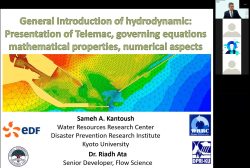 pecifications, and general workflow windows system.
pecifications, and general workflow windows system.
Essentially, the expected topics on the second day of the international training workshop generally focused on technological skills acquisition by the trainees as they were expected to execute hands-on activities on pure hydrodynamics scenario prepared by the resource speakers. Primarily, Engr. Englebert Manmano started with a series of presentations in which he discussed the step-by-step procedures on how to generate a computational mesh for Magat Reservoir in Blue Kenue™, interpolate DEM into quality mesh using Blue Kenue™, define boundary conditions for Magat Reservoir using Blue Kenue™. As he discussed the contents of his presentations, the trainees were instructed to follow every instruction directed by Engr. Manmano.
In the afternoon, Dr. Chen Peng-An comprehensively discussed how to understand and generate the steering file, run the TELEMAC-2D and 3-D for Cagayan River Basin, and draw post-processing results. While presenting these topics, the participants also followed every instruction given by Dr. Peng-An to learn how to utilize TELEMAC as a modelling system in various scenarios.
The slated topics for the last day of the technical session were focused on the use of TELEMAC for sediment transport. Dr. Chen Peng-An commenced the training by discussing the sediment transport module – GAIA, specifically the parameters and data files of steering GAIA. He illustrated how hydrodynamics is coupled with morphodynamics as well as the structure of a sediment transport. He further explained how to run the TELEMAC-2D coupled with GAIA, while Engr. Englebert Manmano elucidated the visualization of sediment transportation simulation. Consequently, the trainees methodically followed the series of instructions set by the resource speakers for the execution of the hands-on activities in every topic.
Moreover, Dr. Peng-An presented a simple demonstration on the use of TELEMAC-3D for the trainees to appreciate how it functions in various circumstances. Lastly, group presentations for on-site and online trainees with corresponding feedback were organized to gauge their extent of understanding on the lectures presented by the resource speakers and for the application of the technological skills they acquired through the training workshop. To this end, Dr. Orlando F. Balderama of Isabela State University clinched the international event by emphasizing the essence of working together for the good of everyone and the country.
—-
Report from
ISU IFWARM Project | ISU SWIM Research and Development Center
Published
River Basins for Sustainable Development | https://bit.ly/3MfPAbT.
March 1, 2022

